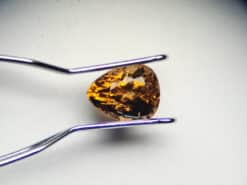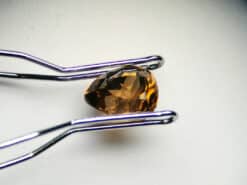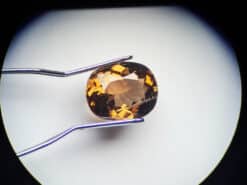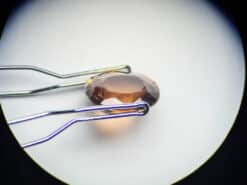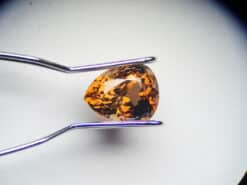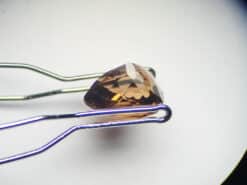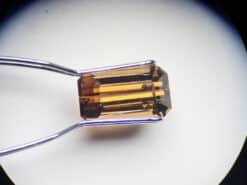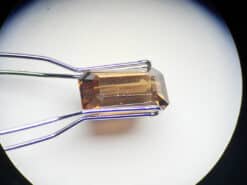Enstatite
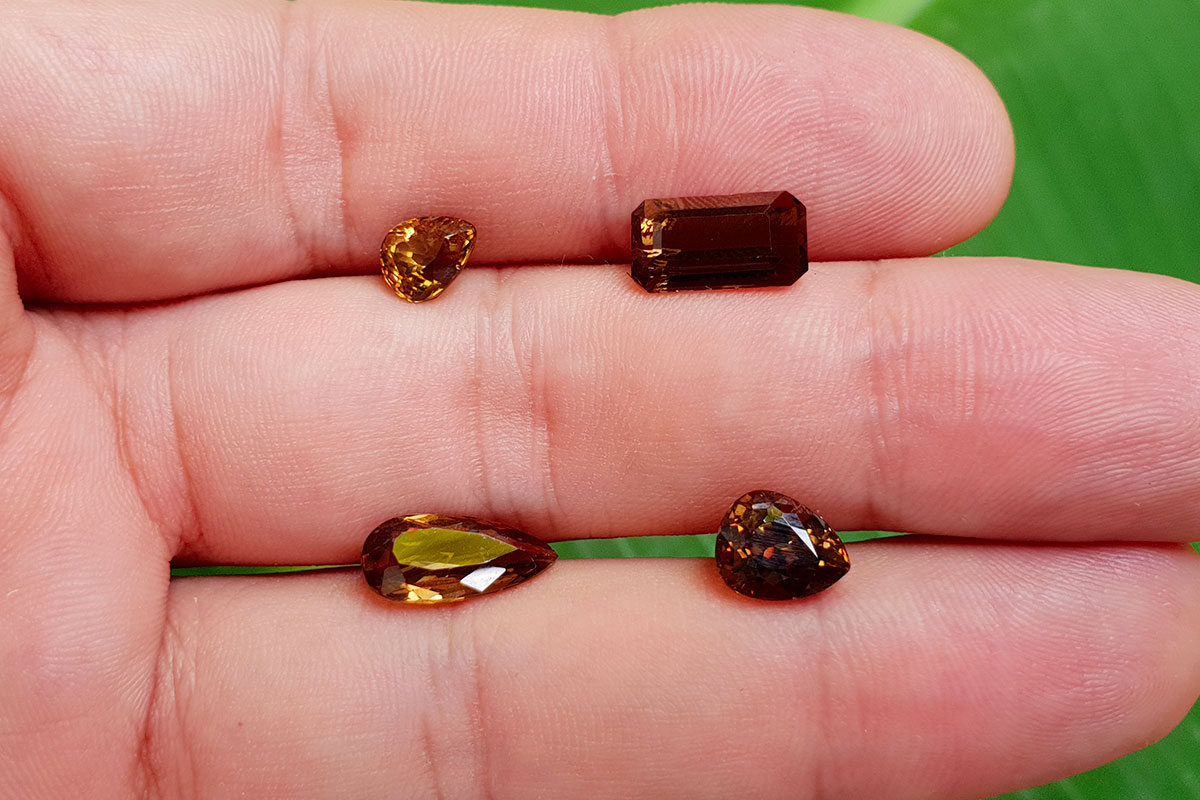
Enstatite is a mineral. The magnesium endmember of the pyroxene silicate mineral series enstatite (MgSiO3) – ferrosilite (FeSiO3).
Buy natural enstatite in our shop
Enstatite gemstone
The magnesium rich members of the solid solution series are common rock-forming minerals found in igneous and metamorphic rocks.
Enstatite formula
The intermediate composition, (Mg,Fe)SiO3, Was first known as hypersthene. Although this name has been formally abandoned and replaced by orthopyroxene. The chemical composition contain a relative proportions of enstatite and ferrosilite.
Most natural crystals are orthorhombic. Although three polymorphs are known. The high temperature, low pressure polymorphs are protoenstatite and protoferrosilite. While the low temperature forms, clinoenstatite and clinoferrosilite, are monoclinic.
Weathered The stone with a small amount of iron takes on a submetallic luster and a bronze-like color. This material was name bronzite. But the correct name is “Altered enstatite”.
Bronzite and hypersthene were known long before. Which was first described by G. A. Kenngott in 1855.
Enstatite mineral Identification
THe stone and the other orthorhombic pyroxenes are different from those of the monoclinic series by their optical characteristics. Such as straight extinction, much weaker double refraction and stronger pleochroism.
They also have a prismatic cleavage that is perfect in two directions at 90 degrees. The gemstone is white, gray, greenish, or brown in color; its hardness is 5–6 on the Mohs scale, and its specific gravity is 3.2–3.3.
Enstatite crystal
Isolated crystals are rare, but orthopyroxene is an essential constituent of various types of igneous rocks and metamorphic rocks. Magnesian orthopyroxene occurs in plutonic rocks such as gabbro (norite) and diorite. It may form small idiomorphic phenocrysts and also groundmass grains in volcanic rocks such as basalt, andesite, and dacite.
The stone, close to En90Fs10 in composition, is an essential mineral in typical peridotite and pyroxenite of the Earth’s mantle. Xenoliths of peridotite are common in kimberlite and in some basalt. Measurements of the calcium, also aluminum, and chromium contents in these xenoliths.
Orthopyroxene is an important constituent of some metamorphic rocks such as granulite. Orthopyroxene near pure stone in composition occurs in some metamorphosed serpentines.
Large crystals, a foot in length and mostly altered to steatite. We found it in 1874 in the apatite veins traversing mica-schist. And hornblende-schist at the apatite mine of Kjörrestad, near Brevig in southern Norway.
The gem is a common mineral in meteorites. We found crystals in stony and iron meteorites. Including one that fell at Breitenbach in the Ore Mountains, Bohemia. In some meteorites, together with olivine it forms the bulk of the material. It can occur in small spherical masses, or also chondrules, with an internal radiated structure.
Sample from Madagascar
FAQ
What is enstatite used for?
The stone is lively, friendly, and can have a mood-lifting effect. It helps us to re-charge the body’s flow of energy while keeping our feet firmly on the ground. It aligns the major chakras, and opens the Base, Solar Plexus, Throat, Third Eye and Crown.
What is enstatite made of?
(MgSiO3) is the magnesium endmember of the pyroxene mineral group. This mineral consists of chains of linked silica tetrahedra with magnesiums that are coordinated by two opposing silicate chains.
What mineral is enstatite?
Common silicate mineral in the pyroxene family. It is the stable form of magnesium silicate (MgSiO3, often with up to 10 percent iron) at low temperatures. See orthopyroxene.
Where can enstatite be found?
It is usually found in areas where diamonds are mined. However, it also occurs in volcanic rocks and in stony meteorites. The gemstone is usually found in masses or in fibrous lamellar aggregates. It is found in association with olivine, phlogopite, clinopyroxene, diopside, spinel and pyrope.

